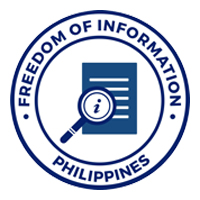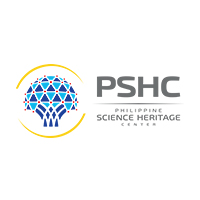The National Academy of Science and Technology, Philippines (NAST PHL), through its Biological Sciences Division (BSD), conducted a Roundtable Discussion on Non-Communicable Diseases (NCDs) and other Health and Wellness Risks from the Marine Environment on March 31, 2015 at Hotel Jen Manila.
The RTD is the sixth in the series of discussions conducted in preparation for the 37th Annual Scientific Meeting (ASM) on July 8-9 with the theme, “The Challenges of Non-Communicable Diseases (NCDs): Responding Through Multisectoral Action”. The RTD focused on vectors and pathways of common Philippine health and wellness risks and hazards from the marine environment. Researches, as well as monitoring and management schemes, were reviewed and discussed.
Acd. Antonio Miguel L. Dans, member of Health Sciences Division (HSD), discussed the rationale and objectives of the ASM and gave an introduction to NCDs. Acd. Dans stated the importance of enabling people to live a healthy lifestyle compared to merely educating them. According to him, environment plays a role on the prevalence of NCDs. While lifestyle was identified as culprit, being healthy is not a choice but rather an adaptation to the way the world was built.
He believes that changing the environment, not merely educating people. can help change their behavior. They should be empowered to change their behavior to live a healthy lifestyle. Acd. Rhodora V. Azanza, member of the Biological Sciences Division and professor at the Marine Science Institute, College of Science, UP Diliman, discussed the causes, vectors, and pathways of poisonings from finfish and shellfish. According to her, not all algal blooms are harmful but harmful algal blooms are predominant in unhealthy environment. They are caused by proliferation of certain microalgae that can cause massive fish kill, contaminate seafoods, alter the ecosystem, or in worse cases, can cause poisoning in humans.
Acd. Azanza enumerated two types of seafood-born poisoning— shellfish related and finfish related. Under the shellfish related poisoning, there is paralytic shellfish poisoning (PSP), diarrhetic shellfish poisoning (DSP), amnesic shellfish poisoning (ASP), and neurologic shellfish poisoning (NSP). For the finfish related poisoning, there is ciguatera fish poisoning (CSP), puffer fish poisoning (PFP), scombroid fish poisoning (SFP).
Dr. Arturo O. Lluisma, UP research associate professor and program director of the Bioinformatics Program and Core Facility, Philippine Genome Center, discussed the genomic and proteomic studies on toxic algae for enhanced monitoring. According to him, many species produce toxins that pose threats to public health. However, not all species produce the same level of toxicity. According to Dr. Lluisma, genomic, proteomic, and molecular genetic approaches can provide tools to monitor harmful algae and their toxicity in the environment.
Dr. Aletta T. Yñiguez, assistant professor at the UP-MSI, discussed in detail the modelling of red tides for management purposes. Pyrodinium, a dinoflagellate, is the most frequent cause of HAB in the Philippines. Dr. Yñiguez proposed a good HAB management and mitigation program to be able to control and mitigate its adverse effects. She suggested being proactive in assessing causative species, including conditions affecting blooms, toxins accumulation, and sites affected. She also presented the DOST Philippine HABs program, with a component which is a collaboration between the academe and the Bureau of Fisheries and Aquatic Resources (BFAR) that aims to develop an early warning system for HAB.
Mr. Ray Justin Ventura and Ms. Paola Katrina Ching, field epidemiology training program fellows, Department of Health, discussed the epidemiology of poisonings from marine organisms. Mr. Ventura shared his case study on chelonitoxin, a toxin acquired by eating meat of marine turtles, in Arteche Village in Samar. Based on their results, positive correlation was established between poisoning and consumption of turtle meat. Further, Ms. Ching reported that in Torongan Samar, poisoning was caused by eating green mussels containing saxitoxin.
National Scientist Angel C. Alcala, professor emeritus of Siliman University talked about poisonings and wellness risks from marine and estuarine reptiles. He presented fifteen (15) species of sea kraits and sea snakes in the Philippines. All species of sea kraits and sea snakes in the Philippines pose considerable risk to humans through venomous bites. Two species of sea snakes were found to have been unable to deliver enough venom to cause serious harm. However, caution is advised when in contact with these venomous species. NS Alcala recommended further studies on related topics such as accurate statistics concerning snake species in the country, cultural belief of the people pertaining to snake bites, production of anti-venom in the country, training of physicians, and other research programs.
Ms. Sandra Victoria R. Arcamo, chief of Fisheries Resource Management Division of BFAR, represented Atty. Benjamin Felipe S. Tabios, Jr., BFAR assistant director, discussed monitoring and management of poisonings caused by marine organisms. According to Ms. Arcamo, monitoring shellfish toxicity is their primary activity which is done through mouse bioassay. This monitoring serves as the basis for advisories and shellfish bulletins. According to Ms. Arcamo, their regular sampling in Manila Bay—Cavite, Navotas, Bulacan, and Bataan, is done twice a week while monitoring in provincial areas is done once a month. They also have a National Shellfish Sanitation Program and future plans in monitoring marine biotoxins.
Acd. Asuncion K. Raymundo, member of the BSD, provided the synthesis of the discussions while Acd. Azanza served as the focal person of the RTD.











